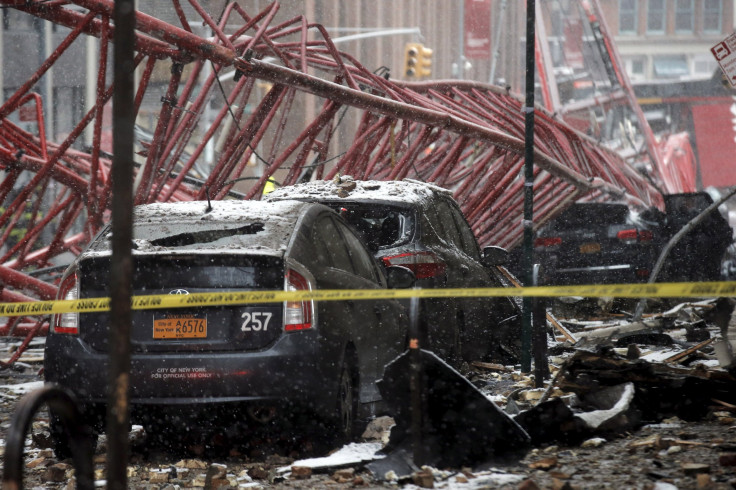Crane Collapse Revives NYC Worksite Safety Issues

The deadly collapse of a construction crane in lower Manhattan on Friday highlights New York City's failure to adequately address a safety "crisis" at hundreds of worksites across the city, an official watchdog said.
The sharp criticism of the New York City Department of Buildings was made by the office of Comptroller Scott Stringer, who released the results of an updated audit just hours after the accident.
Stringer painted a picture of crane safety that appeared to be at odds with the more sanguine view offered by Mayor Bill de Blasio, who said the company that operated the collapsed crane appeared to be following the rules to the letter.
"Crane safety is a crisis, but the city has not treated it like one," Stringer said in a statement.
The audit, completed in 2014 and updated in November, found that the buildings department has been too slow in implementing reforms recommended in a study commissioned by the city to improve safety at construction sites.
The update's findings were announced by Stringer within hours of the crane collapse in the Tribeca neighborhood of downtown Manhattan during the morning rush hour. The accident killed one person and injured three.
Investigations by the police and the buildings department are under way.
The "crawler crane" involved in Friday's collapse is among 376 used in construction in New York City. Another 53 taller "tower cranes" are also being operated in the city.
After Friday's collapse, the city ordered all cranes to be shut down and secured due to the wind.
CONTESTED FINDINGS
Stringer said the initial audit in 2014 found only eight of 65 safety recommendations had been implemented fully. The update found persistent weaknesses in the department's management of the recommendations.
His office would not say whether the report had been due on Friday or whether it was released early because of the collapse.
A spokesman for the Department of Buildings fired back on Friday, accusing Stringer in an email of "clouding the facts." The department had fully implemented 30 of the recommendations and was working on adopting 23 more, according to spokesman Joseph Soldevere.
"There is more oversight of cranes in place than ever before," he added.
The recommendations included requiring the use of black boxes to record data from crane operations, tighter rules on inspection of bolted connections on cranes, putting technical advisers on site during crane assembly and other measures.
In making his case, Stringer cited "at least four significant crane collapses" in the last 2-1/2 years.
But de Blasio said at a press conference that the collapse on Friday marked the first such accident since 2008, when nine people died in two separate collapses, leading to stiffer regulations. He made no reference to other crane accidents that have occurred since then.
A City Hall spokesman later clarified that de Blasio was referring to fatal crane collapses involving sites under the jurisdiction of the buildings department. The instances cited by Stringer either involved a site overseen by a non-city agency or did not result in any fatalities.
The mayor also defended the company that operated the crane for following regulations by seeking to secure the crane in high winds.
But he conceded he was worried about several recent construction accidents, which he characterized as avoidable, and said the city was taking steps to deal with them, including bolstering the number of inspectors at work sites.
Part of the city's construction safety plan will involve a $120 million "modernization" of the buildings department that will include the hiring of 100 new inspectors to inspect high-risk construction sites with greater frequency, a mayor's spokesman said.
"But that's a different issue than what we have here," the mayor said.
Tom Barth, a crane and construction expert often hired to analyze accidents, said in a phone interview that the city's laws were not the problem.
"The people going out to inspect the cranes are incompetent," said Barth, who is based in South Carolina. "You have some of the stiffest regulations on cranes that there are. Why are there so many accidents?"
Meanwhile, other city officials joined Stringer in connecting Friday's crane incident with the city's broader construction site safety problems.
Manhattan Borough President Gale Brewer called for heightened safety at work sites and said she would introduce a package of proposed actions in the coming days.
One such measure Brewer supports is a bill proposal to require additional safety training for construction workers who work on sites higher than 10 stories.
"City enforcement must do more than levy fines and increase the cost of doing business, it must actually make dangerous work sites into safe ones," Brewer said in a statement.
(Editing by Frank McGurty, Leslie Adler and G Crosse)
© Copyright Thomson Reuters 2024. All rights reserved.











